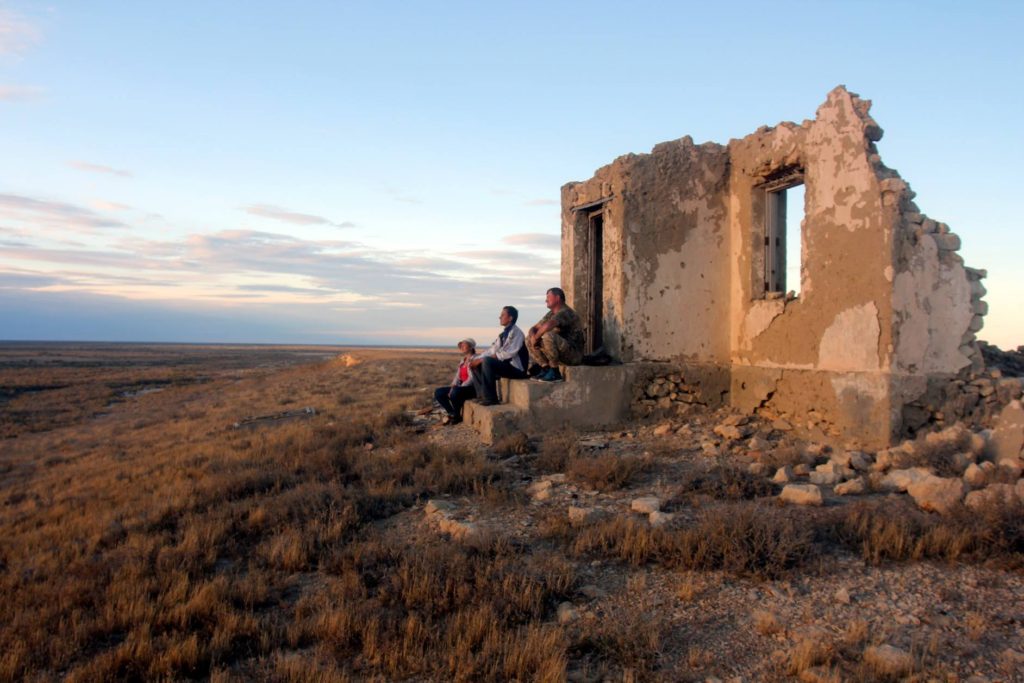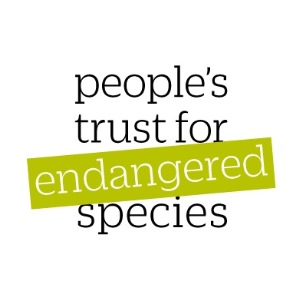Project website https://resurrectionisland.web.ox.ac.uk/home
Project Facebook page https://www.facebook.com/ResurrectionIslandProject?mibextid=ZbWKwL
The Aral Sea, in Central Asia is synonymous with ecological and socio-economic collapse, but carries with it the seeds of its own recovery. At the centre of the region in lies what, until the Sea largely disappeared, used to be an island: Vozrozhdenie (meaning ‘Resurrection’). This remote island has been home to the charismatic and critically endangered saiga antelope for at least 400 years. Until recently, the unique biodiversity of Resurrection Island has been well-preserved, not least due to its inaccessible location and because it was for a long time a closed-off military zone. Nevertheless, the wider area suffers from immense environmental and human health challenges as a result of the Aral Sea crisis and bio-chemical weapons testing.

The Saiga Conservation Alliance’s ambitious new ‘Resurrection’ programme aims to lay the foundation for designating Resurrection Island as a Protected Area, while developing sustainable income streams enabling residents to benefit, and ensuring that industrial development results in ‘No Net Loss’ of biodiversity. We bring government, industry and communities together; turning this area from a symbol of despair into one of hope and regeneration.
The recent drying of the sea and decommissioning of a Cold War-era abandoned military base on the Island recently allowed access to scientists, but sadly also to poachers and looters, making clear its conservation and cultural value, but also its vulnerability, and the future development of this bastion of wilderness is being discussed. The region is key to growing Uzbekistan’s economy, and there is strong interest in exploiting the area for oil, gas and other industries, as well as for tourists to visit the dry sea-bed and former fishing villages. On the other hand, there are also calls for putting the area under protection to preserve its unique fauna and flora.

About Resurrection island
Resurrection Island is located in the Aral Sea region, which straddles the borders of Kazakhstan and Uzbekistan. During the Soviet period, the area changed dramatically.
The Aral Sea almost entirely disappeared (to be replaced by a new desert) as a result of gigantic irrigation programmes, starting in the 1950s, which diverted the two rivers feeding into it. The resulting Aral Sea crisis is now widely considered one of the greatest man-made environmental disasters in the world. No longer an island, Resurrection Island is surrounded by exposed seabed, covered in a thick layer of salts and pesticides. The seabed has proven extremely resistant to revegetation, and large dust storms regularly spread the toxic salts and pesticides widely across the region, with severe negative impacts on human health and agriculture.
Nevertheless, the fauna of Resurrection Island still remains rich. It includes approximately 130 vertebrates. Among those, the Saiga Antelope, Central Asian Tortoise, Pallid Harrier and Eastern Imperial Eagle – are all listed in both the global IUCN Red List and the Red Data Book of Uzbekistan. The flora of Resurrection Island includes 123 species of vascular plants. Certain plant communities have practically disappeared from the surrounding deserts; but are thus far still flourishing on Resurrection Island. Even with severe environmental degradation, life here is finding a way to come back.
Known as Aralsk-7, Resurrection Island was used as a secret Soviet test site for biological weapons between 1948 and 1992. The village of Kantubek on the island used to house a population of 1,500 workers and their families. The government of Kazakhstan (which owns the northern part of the island) declared Resurrection Island safe to visit again in 2018 for the first time. Since then, journalists and others have begun to visit the island.
Click here to view a stunning Google Earth time lapse of the drying of the Aral Sea

Our ‘Resurrection’ programme will work towards:
1) Gaining Protected Area status for the Island. And in so doing building resilience back into the Ustyurt social-ecological system. Through a combination of preparing the groundwork for official protected area status, and raising awareness of the value and status of biodiversity on Resurrection Island and the Ustyurt among local residents, regional and national government, the project will safeguard the Island’s biodiversity. Protecting and positing saiga antelopes as a flagship species, at the same time as preserving the unique fauna and flora of the island more generally.
2) Supporting the livelihoods of local people. Using the ecological and cultural assets of Resurrection Island and the surrounding landscape to facilitate new small-scale livelihood opportunities, and helping address unemployment. Capitalising on Uzbekistan’s prioritisation of tourism, Resurrection Island and its surroundings will become a reliable and widely appreciated source of income and pride; producing a clear link between biodiversity and benefits to people.
3) Work towards ‘No Net Loss’ of biodiversity. Through working closely with industrial development projects modernising regional infrastructure we will ensure they are in line with emerging global conservation policies to achieve No Net Loss of biodiversity, or better, in the region.
Together, these activities will create social pressure to reduce poaching and looting, and galvanise better protection of biodiversity by governmental agencies. The combined impact will secure and enhance the biodiversity of the Aral Sea region. The island will celebrate a flourishing saiga antelope population, where they can roam safely, and are recognised locally as a flagship for a newly-resilient ecosystem, while contributing to sustainable economic growth.
Download the program flyer in English here
Download the program flyer in Uzbek here
Programme updates
Spring 2022
In Spring 2022 – at long last we were able once more to go to Resurrection Island. We gathered a team of researchers and made the long journey from Tashkent to the Aral Sea. It took us a couple of days to get there, passing some stunning scenery along the way. Nothing competes with the wonder of the Aral Sea, however.
Here are some video updates we took while we were there, to give you a taste of what we were doing in the field.
Walking along the bottom of the Aral Sea. Spring 2022 video reports.
Only a few years ago we would have been swimming where we stand – look at all the salt which was left behind as the sea was drained to irrigate cotton!
As we walked around the island and what was once the foor of the sea surrounding it, we were REALLY excited to see dozens of saiga tracks! The great thing about the former sea floor is that it is fabulous for capturing tracks of anything that passes over it. Virtually impossible for cars to drive over, but great for saigas to roam around, and that made our detective work so much easier.
In this next clip you can see the challenge we had when finding somewhere to set up our camera traps- usually we try to hid these from poachers, and away from disturbance from animals by hiding them in bushes, attaching them safely to a tree, or even positioning then in rocks. But here, on Resurrection island these helpful features just don’t exist! But we needed to see which parts of the island the saigas were using, and what for.
Once the waters receeded it meant that the surrounding villages were regularly hit with toxic sandstorms, as winds whipped up sand and other chemicals once used for fertilizers and carried them to the villages.
The Uzbek governement, and local NGOs have been carrying out restoration programmes, planting native shrubs with the aim of stabilising the sands, and eventually stopping these harmful sandstorms from impacting on people’s health.
Uzbekistan is one of the few land-locked countries inthe world. The nearest coastline is about 3000 km away on the other side of Turkmenistan and Iran.
it might surprise you then, to learn that the former bed of the Aral sea is littered with shells from creatures which can also be found on coastlines around the world!
Thank you to our generous funders for supporting this programme


